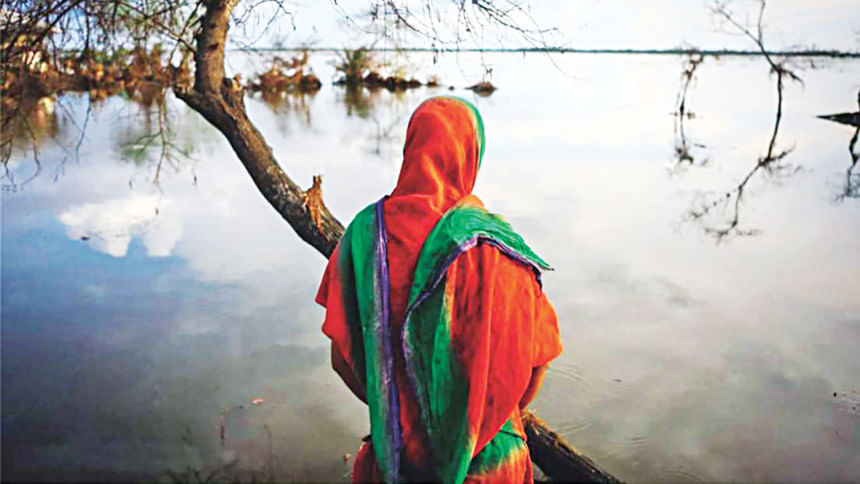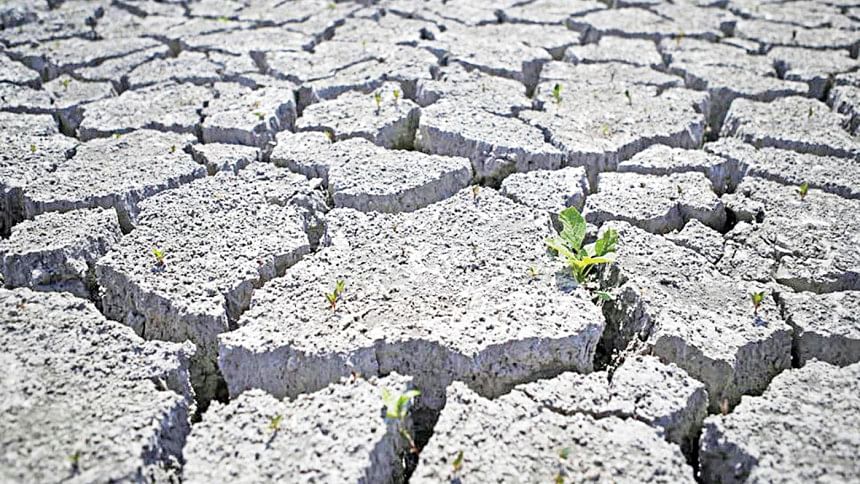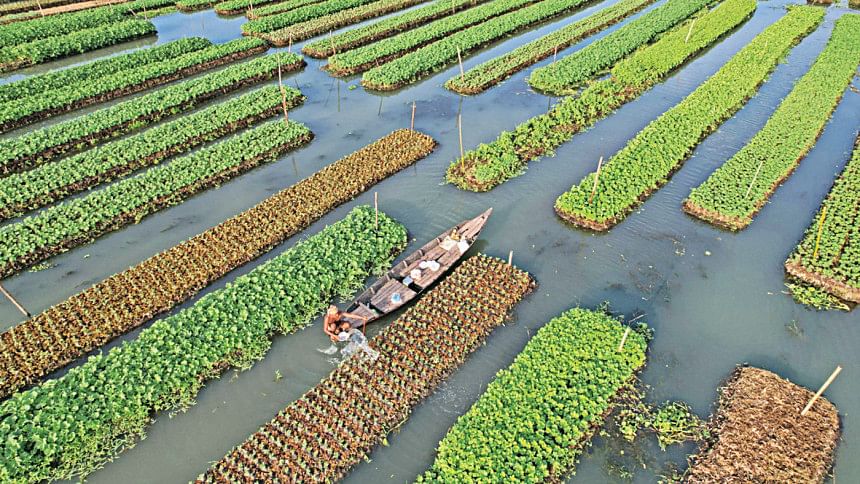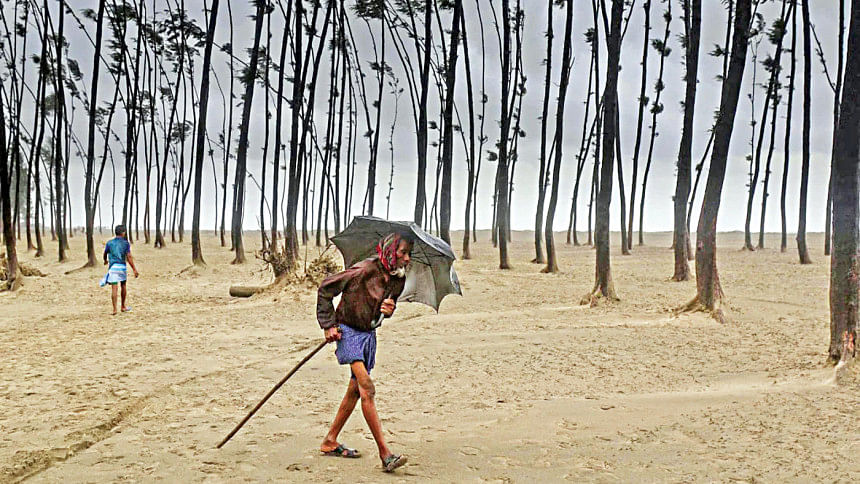Nature-based solutions can fight two key battles together

In the last two months of 2022, two large global events took place on two continents flanking the Atlantic Ocean. In November, around 35,000 people met at the Egyptian tourist city of Sharm El-Sheikh for the 27th Conference of the Parties to the United Nations Framework Convention on Climate Change (COP27). A couple of weeks later in early December, Canada's Montreal got busy with the 15th biodiversity conference organised under the UN Convention on Biological Diversity (CBD). These two meetings were a big deal for the Earth as they discussed two ongoing global crises of our lifetime – climate emergency and disappearing biodiversity.
Over the past few years, an environment-related notion has drawn huge traction around the globe – Nature-based Solutions (NbS). NbS also found its place in the long list of action points the above two events produced, agreed upon by around 200 nations. At Sharm El-Sheikh, the world emphasised that protecting, conserving, restoring, and sustainably using all kinds of ecosystems is crucial to fight climate change. In March 2022, the Fifth UN Environment Assembly (UNEA-5) at Nairobi, Kenya endorsed a definition of NbS – for the first time by the UN. This definition, based upon the International Union for Conservation of Nature's (IUCN) 2016 NbS definition, reads: "nature-based solutions are actions to protect, conserve, restore, sustainably use and manage natural or modified terrestrial, freshwater, coastal and marine ecosystems, which address social, economic, and environmental challenges effectively and adaptively, while simultaneously providing human well-being, ecosystem services, resilience and biodiversity benefits." Referring to the UNEA-5, the "Sharm El-Sheikh Implementation Plan" encourages all nations to consider NbS or ecosystem-based approaches for climate change mitigation (i.e., reducing carbon emissions) and adaptation (i.e., adjusting to climate change impacts).

At Montreal, on the other hand, the nations adopted the "Kunming-Montreal Global Biodiversity Framework" (GBF) to stop the current unprecedent rate of species extinction. The Framework has 23 targets to be achieved by 2030, including protecting 30 percent of the world's land and water. Target 8 is very much in line with the "Sharm El-Sheikh Implementation Plan," as it talks about increasing biodiversity resilience through climate change mitigation and adaptation via NbS and/or ecosystem-based approaches.
In recent years, Bangladesh has come a long way in adopting NbS in its climate change policies and plans. In September 2021, for example, we saw how NbS was mainstreamed in the draft Mujib Climate Prosperity Plan (MCPP2030). One year later, Bangladesh embraced NbS as a key strategy to adapt to climate change over the next 28 years as the government approved the National Adaptation Plan of Bangladesh (NAP2050). But, despite the historic constitutional amendment of 2011, which made nature conservation a responsibility of the state, we don't see similar movement and momentum in biodiversity conservation as we see in climate change. With donor money the National Biodiversity Strategy and Action Plans (NBSAPs) are being prepared since 2004, the "Wildlife (Conservation and Security) Act" was updated in 2012, the Wildlife Crime Control Unit was established in the same year, the "Bangladesh Biodiversity Act" was enacted five years later, and the list of protected wildlife species was extended in 2021, for example, but investments and consorted efforts to protect the country's nature is still limited.
Nevertheless, NbS can effectively bring our climate and conservation actions together, not only to use ecosystems to fight climate change, but also to reduce negative impacts of climate crisis on biodiversity. Such synergistic efforts can maximise the use of our scarce financial resources, especially in the post-Covid, Ukraine-war-laden times. It can also help us to see biodiversity conservation beyond the boundaries of wildlife sanctuaries, national parks, safari parks, and eco-parks.

It is often perceived that NbS is just planting thousands of trees, thus converting barren lands into lush landscapes. But it is not quite true. If such forestation is done with a single tree species, it is in no way a NbS, since it doesn't offer tangible biodiversity benefits rather could be disastrous as, for example, it may not survive pest attacks. That's why in Bangladesh we now create greenery and coastal green belts with multiple species. At our older mangrove plantation sites, when plants die from natural causes, enrichment plantation is done in the vacant spaces with many stronger mangrove species.
Besides forestry, NbS can be widely practiced in agricultural sector. Agroforestry or combining crops and trees on the same field is a nature-based intervention, so is floating agriculture, which has been practiced in southern Bangladesh for 200 years. Conservation agriculture, on the other hand, means always keeping the soil covered with crops or crop residues, using no or minimum tilling of arable land, and having different crops successively on the same land. Studies in Bangladesh showed nature-based agricultural practices can reduce water use by up to 33 percent, cultivation costs by up to 75 percent, and greenhouse gas emissions from rice fields by a maximum of 31 percent, and can increase production by up to 28 percent. All these not only help us with food security and biodiversity conservation, but also climate change adaptation.

NbS is not only an activity to be taken up by government agencies and NGOs involved in natural resource management. Rajuk, LGED, WASA, and Bangladesh Army, for example, restored Hatirjheel and Begunbari Khal to tackle Dhaka's waterlogging. Humanitarian agencies are implementing ecosystem-based disaster risk reduction interventions in the degraded hilly terrain of Ukhiya, Cox's Bazar, sheltering about 0.8 million Rohingya refugees. The proposed Bangabandhu Sheikh Mujib Shilpa Nagar – a 137-square-kilometre economic zone city along the Feni-Chattogram coast – offers a fantastic opportunity to implement NbS by conserving and expanding the existing coastal mangroves, protecting new embankments with green-belts, excavating water reservoirs, and promoting green infrastructures.
To scale up NbS, we should take some urgent actions in three areas. Let's start with funding. Since 2015, Bangladesh has been earmarking climate budgets of its 25 ministries and government agencies. Bangladesh Finance Division should now track how these allocations are being spent not only by the public entities, but also in the pertinent sectors and sub-sectors. Such monitoring is essential since actions like conservation don't only belong to the Ministry of Environment, Forest and Climate Change (MoEFCC). This will also allow us to see how much of our USD 3.4 billion climate budget is spent on NbS. In addition to new investment plans (e.g., MCPP2030, NAP2050, and Bangladesh Delta Plan 2100), we have also updated the Climate Fiscal Framework (2020) outlining different funding provisions for climate action. Government's designated bodies and accredited agencies now need to make all out efforts to fund these plans from the Global Environment Facility (GEF), the Green Climate Fund (GCF), the Adaptation Fund, and the to-be-established Loss and Damage fund to take nature-based actions. Furthermore, we need to have functional Biodiversity Conservation Fund and Ecosystem Management Fund, as outlined in the "Bangladesh Biodiversity Act 2017" and the "Ecologically Critical Area Management Rule 2016", respectively. And, we should revisit the 12-year-old Bangladesh Climate Change Trust Act – as envisaged in the NAP2050 – to efficiently coordinate as well as channel funds from the above international and domestic sources.
Second, given the increasing interest in NbS, there is a risk of using NbS for "greenwashing" where agencies with vested interest misleadingly pose their actions as nature-friendly, while in reality, these are depriving the local people and harming the biodiversity. The MoEFCC can work with the South Asian office of the Global Center on Adaptation (GCA) in Dhaka and establish a cell to act as a watchdog to flag misuse of the NbS approaches. In 2020, IUCN launched its Global Standard for NbS. It is now planning to launch an NbS certification scheme. Bangladesh could be one of the first countries to adopt similar quality assurance system based on IUCN NbS Standard and avoid malpractice.

Finally, as we implement NbS to climate change, small or big, we must track its effectiveness.
Since we want our NbS to sustain beyond project tenure, we need to create space and system to gather evidence on, for example, if benefits from NbS are equitably shared among the stakeholders, if the NbS is improving the local biodiversity, or if the NbS managers are performing adaptive management in response to changing situation. International Centre for Climate Change and Development (ICCCAD) in Bangladesh has paved the path of bringing together the country's NbS actors under the "NbS Bangladesh Network." This platform could be strengthened to lead knowledge creation, management and sharing by working with interested individuals, NGOs, Bangladesh Planning Commission, the GCA, and initiatives, like UK's Bangladesh Climate and Environment Programme (BCEP).

 For all latest news, follow The Daily Star's Google News channel.
For all latest news, follow The Daily Star's Google News channel. 



Comments